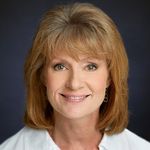- JMP User Community
- :
- Blogs
- :
- JMP Blog
- :
- Why do we fear what most likely doesn’t kill us?
- Subscribe to RSS Feed
- Mark as New
- Mark as Read
- Bookmark
- Subscribe
- Printer Friendly Page
- Report Inappropriate Content
How do you decide if an activity is too risky? How do you know how risky some of your actions are? In the 12 months following the 9/11 terrorist attacks in the US, many Americans avoided flying, choosing to drive instead. But as a result of this increased time on the roads, and especially for long-distrance travel, about 1,600 more people died in crashes on US roads.
This is but one of the many compelling stories that Gerd Gigerenzer, Director of the Harding Center for Risk Literacy at the Max Planck Institute for Human Development, shares about the importance of understanding risk to inform better decisions. In his Discovery Summit Europe plenary speech, “Risk Literacy: The Cement of Society,” he shows why we need to be more risk literate and understand the distinction between risk and uncertainty in finance, health, and digital media. Here are some of his key recommendations.

- Use simple heuristics and opt for simpler, more transparent, and safer algorithms.
- Know the state space. Gerd uses the "turkey illusion" to illustrate that we need to allow for possibilities we haven't witnessed. Each day, a turkey may wonder if it will be killed or fed — on the hundredth day, the turkey may have a high expectation of being fed, but on the day before Thanksgiving, that is not the case. Similarly, financial models need to allow for unknown outcomes.
For decisions regarding health
-
Know the relative risk instead of absolute risk. He criticizes the media for profiting from headlines that are misleading, such as those that overstated the risk of thrombosis from the use of birth control pills; inaccurate media coverage led many women to stop taking their birth control pills and resulted in unwanted pregnancies.
-
Ask for the absolute numbers. Gerd gives an example of the increased risk of colon cancer from eating processed meat. Vegetarians have a 5% lifelong risk of getting colon cancer. If they eat 50 grams of processed meat, the risk increases to 5.9%.
-
Understand the harms of treatment in studies, which can be substantial.
For decisions regarding digital media
- Focus on the known hazards and work to change behaviors, such as distracted driving and overuse of digital media. Distracted drivers cause accidents, with 1,000 people injured and 10 killed every day in US. Technology is having adverse effects on emotional life and cognitive development, as loneliness, depressive thoughts and anxiety have increased compared with previous generations.
Governments can be too paternalistic, wrongly conveying the level of risk involved in taking an action or not taking an action, he says. When we are true to the data and we convey the risks in an easy-to-understand way, everyone will have the information needed to make better decisions affecting their money, health, safety and well-being.
His book, Risk Savvy: How to Make Good Decisions, provides more context and background on why we should all be more risk savvy. Certainly, education is key, but we also need to continually question what the risks really are. Change is the one constant, so we must reassess our risk literacy on an ongoing basis. We need to invest the time in teaching risk literacy and statistical thinking.
- © 2024 JMP Statistical Discovery LLC. All Rights Reserved.
- Terms of Use
- Privacy Statement
- About JMP
- JMP Software
- JMP User Community
- Contact

You must be a registered user to add a comment. If you've already registered, sign in. Otherwise, register and sign in.